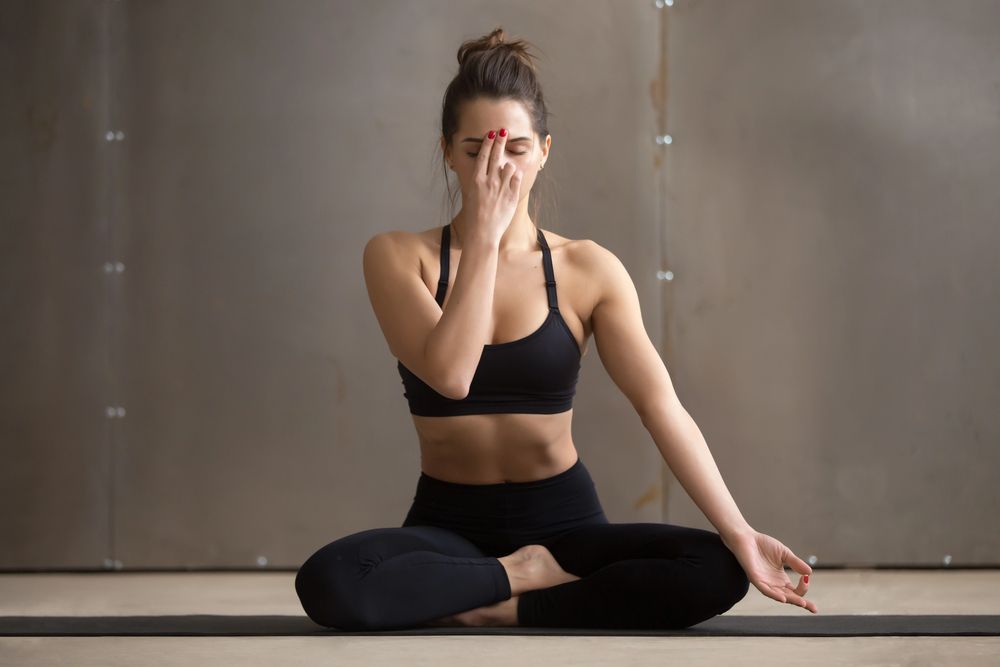Feeling stressed is part of daily life, but when your anxiety is through the roof, it can take a toll on both your body and mind. Finding quick and effective ways to manage these feelings is key to maintaining your well-being.
One of the simplest and most powerful methods is through breathing exercises for stress and anxiety. These techniques can help you regain control, calm your mind, and reduce physical tension.
In this blog post, we’ll explore six highly effective breathing techniques that can help you manage stress and anxiety anywhere, anytime.
What Are Breathing Exercises and How Do They Help?
Breathing exercises are simple, yet powerful techniques designed to promote relaxation and reduce stress by focusing on deep, slow, and controlled breathing patterns.
These exercises encourage you to be more mindful of your breath, which is one of the most fundamental bodily functions we often take for granted. By intentionally regulating your breathing, you can activate the body’s parasympathetic nervous system, the part responsible for rest and relaxation.
In moments of stress, our breath becomes shallow and rapid, signaling our body to remain in a heightened state of alertness. This is a response linked to the “fight or flight” mechanism.
When we focus on deepening and slowing our breath, we can counteract this response and trigger a state of calm. This shift in physiological response helps lower heart rate, reduce blood pressure, and alleviate tension in the muscles.
Regular practice of breathing exercises for anxiety or stress helps teach the body to enter this relaxed state more easily, reducing the body’s sensitivity to stressors over time. This is particularly beneficial for those who experience chronic stress or anxiety, as these exercises can provide a quick, accessible way to regain control in stressful situations.
Breathing exercises can also improve emotional regulation. When you focus on your breath, it naturally draws your attention away from anxious thoughts and brings you into the present moment.
This mindfulness aspect of breathing helps manage racing thoughts that often accompany anxiety. It’s a simple yet effective tool for mental clarity and emotional balance, enabling you to approach challenging situations with greater composure.
One of the best parts about such exercises is that they don’t require any special equipment and can be done anywhere, be it at work, at home, or even during a busy commute. Their accessibility makes them a convenient tool for managing anxiety and stress in day-to-day life. The beauty of breathing exercises lies in their simplicity and versatility, allowing anyone to practice them in moments of need.
Diaphragmatic Breathing (Belly Breathing)
Diaphragmatic breathing, also known as belly breathing, is one of the most powerful breathing techniques for stress and anxiety. This technique involves breathing deeply into your diaphragm rather than taking shallow breaths into your chest. It helps activate the body’s natural relaxation response, promoting calmness and mental clarity.
How to Practice Diaphragmatic Breathing
- Sit or lie down in a comfortable position.
- Place one hand on your chest and the other on your abdomen.
- Inhale deeply through your nose, making sure your abdomen rises, not your chest.
- Exhale slowly and completely through your mouth, allowing your abdomen to fall.
- Repeat for 5–10 minutes, focusing solely on the breath.
This exercise helps slow the heart rate and release tension in the body. It’s particularly useful for managing anxiety because it directs your focus away from anxious thoughts and back to the breath.
Box Breathing
Box breathing is a simple yet powerful technique often used by athletes, military personnel, and those dealing with high levels of stress. It’s especially effective in situations when you need to quickly calm down and regain focus. The method is based on four equal parts: inhaling, holding the breath, exhaling, and holding again, all for equal counts.
How to Practice Box Breathing
- Sit in a comfortable position and close your eyes.
- Inhale slowly through your nose for a count of four.
- Hold your breath for a count of four.
- Exhale slowly through your mouth for a count of four.
- Hold your breath again for a count of four.
- Repeat for several rounds.
This technique promotes relaxation by calming the nervous system and helping you regain control during stressful moments. It’s a perfect option for moments of acute anxiety or when you need to take a mental break.
4-7-8 Breathing
The 4-7-8 breathing technique is widely used for relaxation and better sleep. It’s a great tool to help calm your mind and ease the tension of the day. This technique is based on breathing patterns that trigger the body’s relaxation response, making it an effective way to reduce anxiety and improve overall well-being.
How to Practice 4-7-8 Breathing
- Sit with your back straight and place your tongue against the roof of your mouth.
- Close your eyes and inhale quietly through your nose for a count of four.
- Hold your breath for a count of seven.
- Exhale slowly through your mouth for a count of eight.
- Repeat the cycle for four rounds, gradually increasing the duration as you become more comfortable.
- This technique can be particularly helpful if you’re feeling anxious before a big presentation or need to relax before bed.
Alternate Nostril Breathing
Alternate nostril breathing is a technique commonly practiced in yoga and is known for balancing energy and calming the nervous system. It’s particularly helpful for those who experience anxiety or stress that feels overwhelming. This exercise works by alternating breathing through each nostril, which helps to balance the left and right sides of the brain and calm the body.
How to Practice Alternate Nostril Breathing
- Sit comfortably with your spine straight and shoulders relaxed.
- Use your right thumb to close your right nostril.
- Inhale deeply through your left nostril.
- Close your left nostril with your right ring finger, and release your right nostril.
- Exhale slowly through your right nostril.
- Inhale through your right nostril, then close it with your right thumb.
- Release your left nostril and exhale slowly through it.
- Continue the cycle for 5–10 minutes.
This technique helps clear the mind, reduce stress, and improve mental clarity. It can be practiced anytime you need to reset your mental state.
Pursed Lip Breathing
Pursed lip breathing is a simple breathing technique that can be especially useful for managing stress and promoting relaxation. It slows your breathing, allowing more air to enter the lungs and increasing the amount of oxygen in the blood. This technique is particularly helpful for people with anxiety or those who feel like they are struggling to catch their breath.
How to Practice Pursed Lip Breathing
- Sit comfortably and relax your shoulders.
- Inhale slowly through your nose for two counts.
- Purse your lips as if you’re blowing out a candle.
- Exhale slowly through your pursed lips for a count of four.
- Repeat for 5–10 minutes, focusing on your breath and the slow exhalation.
This technique is great for controlling the pace of your breathing, helping to regulate stress levels and promoting a sense of calm.
Resonant Breathing
Resonant breathing, also known as coherent or paced breathing, is designed to synchronize your breath with your heart rate, creating a calm and balanced feeling. It’s highly effective for managing anxiety because it helps reduce the physical symptoms of stress, such as a racing heart and shallow breathing.
How to Practice Resonant Breathing
- Sit or lie down in a comfortable position.
- Inhale for a count of five, then exhale for a count of five.
- Keep the inhale and exhale smooth and even, avoiding any pauses or shallow breaths.
- Practice for about 10 minutes, ensuring your breath remains slow and steady.
This technique is a great option when you need to slow down your breathing, calm your body, and regain a sense of peace.
Why Breathing Techniques Are So Effective
Breathing exercises for anxiety and stress are effective because they directly target the body’s physical response to stress. When we experience stress or anxiety, our body’s “fight or flight” response kicks in, releasing adrenaline and cortisol, which cause rapid heart rate, shallow breathing, and muscle tension.
By practicing controlled breathing, we activate the parasympathetic nervous system, which is responsible for calming the body down and bringing us back to a state of relaxation.
Regular practice of breathing techniques can also help improve emotional regulation, reduce the frequency of anxiety attacks, and promote better overall mental health.
When and How to Practice Breathing Techniques
Breathing exercises can be practiced anytime, anywhere. Whether you’re sitting at your desk, waiting in line, or preparing for a big meeting, you can use these techniques to ground yourself and reduce stress. If you’re feeling overwhelmed or anxious, take a moment to engage in one of these exercises to regain focus and calm your mind.
Additionally, practicing these exercises as part of your daily routine, whether in the morning, during lunch, or before bed, can help you build resilience to stress over time and promote long-term mental wellness.
Take the First Step Toward Stress Relief at OASIS Mind & Body
At OASIS Mind & Body, we believe in a holistic approach to mental health. Our expert team provides personalized psychiatric care and medication management, focusing on your overall well-being. We understand that managing stress and anxiety is an ongoing journey, and we’re here to support you every step of the way.
With our luxurious, private office space, no wait times, and same-day appointments, we offer an environment that encourages relaxation and healing. We invite you to explore our services and take the first step toward a healthier, more balanced life.
Schedule an appointment and discover how we can help you manage stress and anxiety with effective, tailored support.







